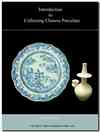Determining Antique Age
How does one determine ...?
Determining antique age of furniture is mentioned here for comparison purposes only. This article refers to Chinese porcelain.
- Furniture age
- Ceramics age
Determining age requires before all lots of experience. After you have seen many genuine and fake antiques you will get the feeling for separating the two.
The same point-by-point inspection happens when determining the age of wooden or porcelain antiques. Slowly you learn to recognize the signs of age specific to the type of item, that distinguish a genuinely old or antique item from a new or recently made one.
Additional knowledge can only improve accuracy of an evaluation. This may include knowledge of styles, colors or tools used in a certain period.
|
Furniture age
|
Ceramics age
With ceramics this is basically the same.
A warning to those who already collect or handle furniture and other antiques, though. You cannot expect ceramics to have the same old
feeling, or judge them by the patina as you would with wood. 200 year old porcelain can look
very new to the untrained eye; on the other hand, old-looking ceramics often have been
cleverly faked to look that way.
Additional learning is indispensable in
this special field of antiques, to acquire the knowledge to recognize age signs and
differentiate them from fake ones. Knowing the basics of ancient kiln
firing methods is of advantage too.
Determining antique age is only possible after the presence of artificial age signs can be excluded. Additional knowledge of decorations, materials, shapes, etc. can only help.
Yes ... porcelain and other ceramics do age too! Their age is often less
obvious, however, and after 200 years some pieces still look pretty new.
Many years of experience come in handy when identifying age signs of
porcelain.
When evaluating age and authenticity nothing equals
experience obtained by the inspection of hundreds or even thousands of ceramic
items, both fake and genuine. Right ... fakes are necessary too! Sometimes you just can't identify age properly unless you know both.
Go from Determining Antique Age to Home Page

